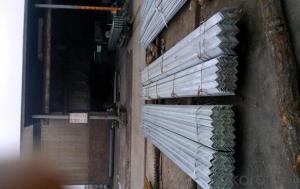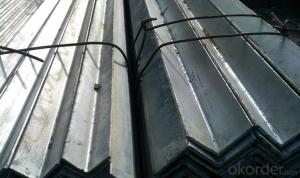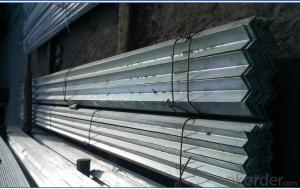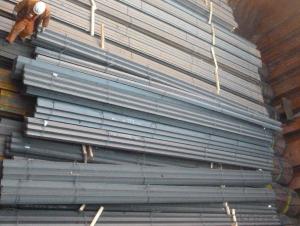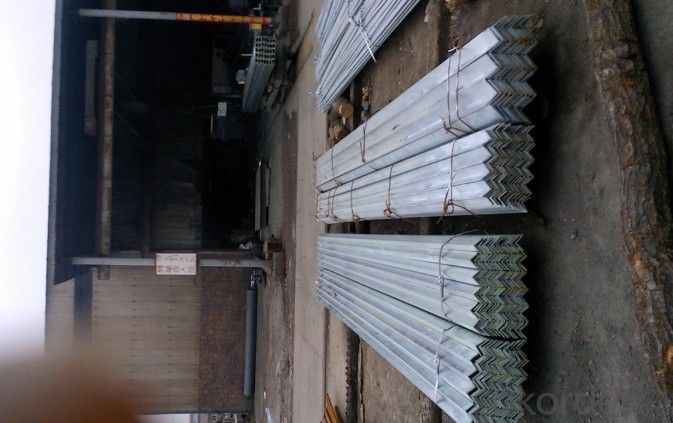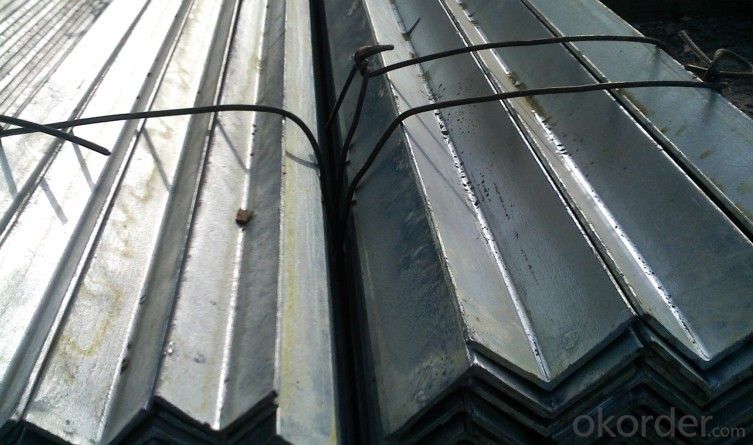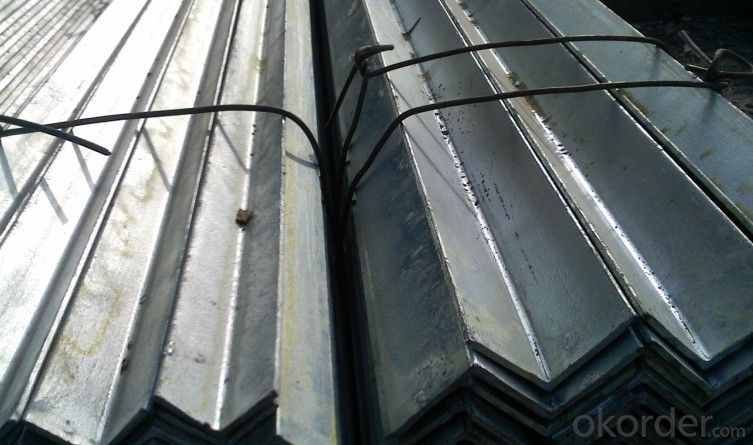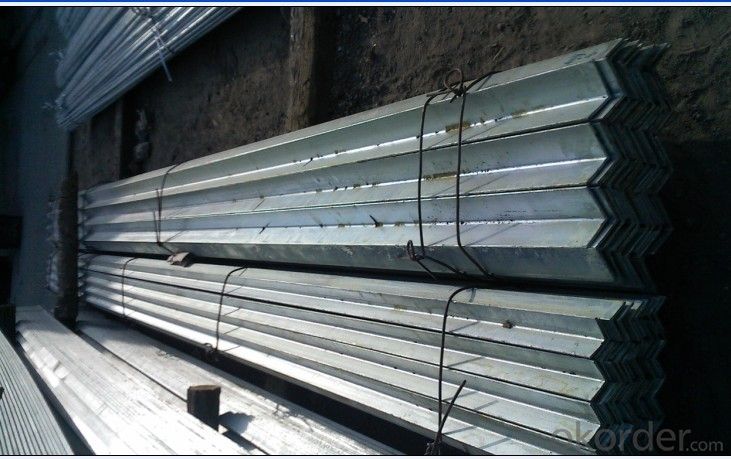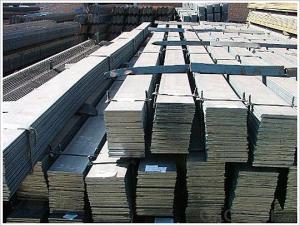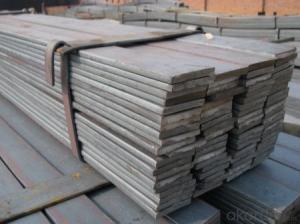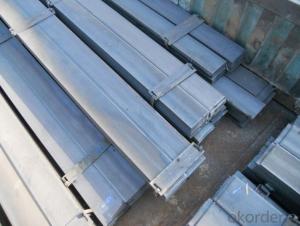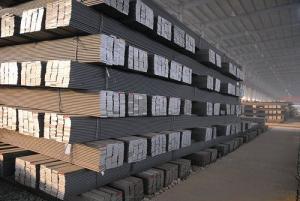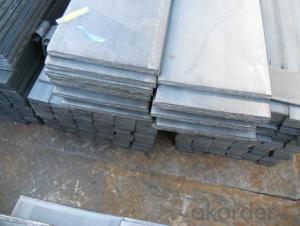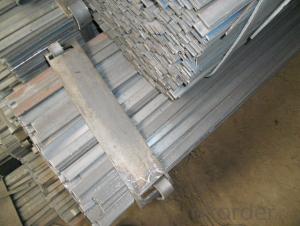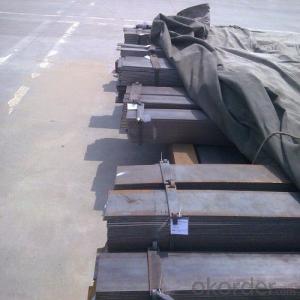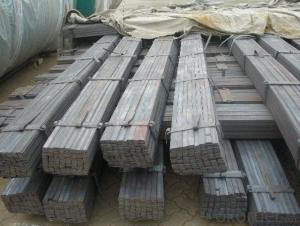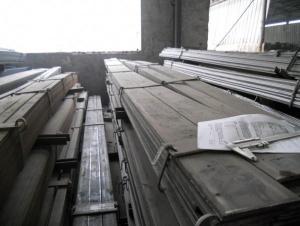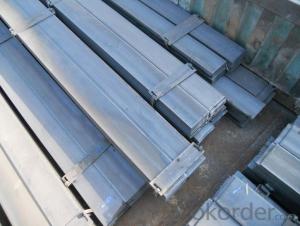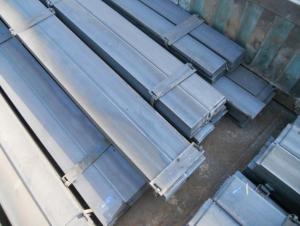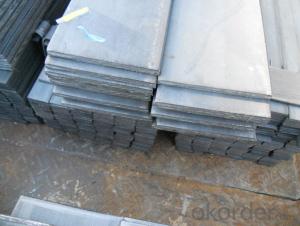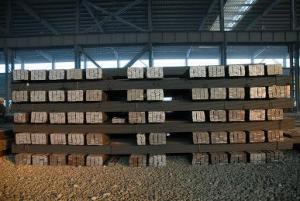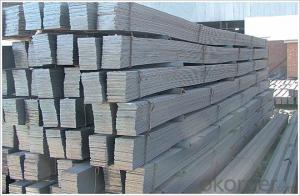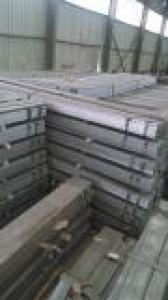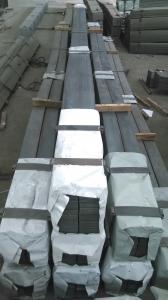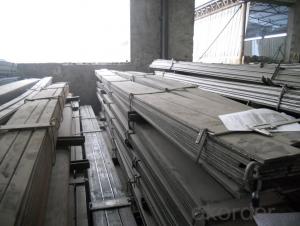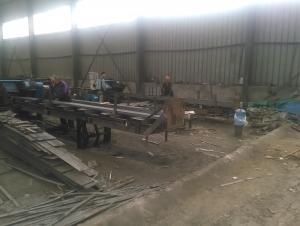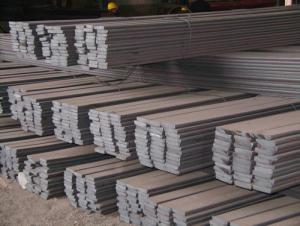high quality hot rolled low carbon steel angle bar
- Loading Port:
- Tianjin
- Payment Terms:
- TT OR LC
- Min Order Qty:
- 5 m.t.
- Supply Capability:
- 2000 m.t./month
OKorder Service Pledge
OKorder Financial Service
You Might Also Like
Product Description:
Specifications of Angle Steel
1. Invoicing on theoretical weight or actual weight as customer request
2. Length: 6m, 9m, 12m as following table
3. Sizes

Sizes: 25mm-250mm | ||
a*t | ||
25*2.5-4.0 | 70*6.0-9.0 | 130*9.0-15 |
30*2.5-6.6 | 75*6.0-9.0 | 140*10-14 |
36*3.0-5.0 | 80*5.0-10 | 150*10-20 |
38*2.3-6.0 | 90*7.0-10 | 160*10-16 |
40*3.0-5.0 | 100*6.0-12 | 175*12-15 |
45*4.0-6.0 | 110*8.0-10 | 180*12-18 |
50*4.0-6.0 | 120*6.0-15 | 200*14-25 |
60*4.0-8.0 | 125*8.0-14 | 250*25 |
5. Payment terms:
1).100% irrevocable L/C at sight.
2).30% T/T prepaid and the balance against the copy of B/L.
3).30% T/T prepaid and the balance against L/C
6.Material details:
Alloy No | Grade | Element (%) | |||||
C | Mn | S | P | Si | |||
|
|
|
|
|
|
| |
Q235 | B | 0.12—0.20 | 0.3—0.7 | ≤0.045 | ≤0.045 | ≤0.3 | |
|
|
|
|
|
|
| |
Alloy No | Grade | Yielding strength point( Mpa) | |||||
Thickness (mm) | |||||||
≤16 | >16--40 | >40--60 | >60--100 | ||||
≥ | |||||||
|
|
|
|
|
| ||
Q235 | B | 235 | 225 | 215 | 205 | ||
Alloy No | Grade | Tensile strength (Mpa) | Elongation after fracture (%) | ||||
Thickness (mm) | |||||||
| ≤16 | >16--40 | >40--60 | >60--100 | |||
≥ | |||||||
|
|
|
|
|
|
| |
Q235 | B | 375--500 | 26 | 25 | 24 | 23 | |
Usage & Applications of Angle Steel
According to the needs of different structures, Angle can compose to different force support component, and also can be the connections between components. It is widely used in various building structures and engineering structures such as roof beams, bridges, transmission towers, hoisting machinery and transport machinery, ships, industrial furnaces, reaction tower, container frame and warehouse etc.
Packaging & Delivery of Angle Steel
1. Packing: it is nude packed in bundles by steel wire rod
2. Bundle weight: not more than 3.5MT for bulk vessel; less than 3 MT for container load
3. Marks:
Color marking: There will be color marking on both end of the bundle for the cargo delivered by bulk vessel. That makes it easily to distinguish at the destination port.
Tag mark: there will be tag mark tied up on the bundles. The information usually including supplier logo and name, product name, made in China, shipping marks and other information request by the customer.
If loading by container the marking is not needed, but we will prepare it as customer request.
Production flow of Angle Steel
Material prepare (billet) —heat up—rough rolling—precision rolling—cooling—packing—storage and transportation
- Q: How do steel flat bars perform under dynamic loads?
- Steel flat bars have excellent performance under dynamic loads due to their high strength and durability. They are capable of withstanding heavy impacts and vibrations without deforming or breaking, making them suitable for various applications such as structural supports, machinery components, and automotive parts. The inherent toughness and resilience of steel allow flat bars to effectively absorb and distribute dynamic forces, ensuring the integrity and stability of the structure or system they are incorporated into.
- Q: Are steel flat bars suitable for machining processes?
- Yes, steel flat bars are suitable for machining processes. Steel flat bars are typically made from low-carbon steel, which is known for its excellent machinability. This means that it can be easily cut, drilled, and shaped using various machining techniques, such as milling, turning, or grinding. Additionally, steel is a durable and strong material, making it ideal for machining applications that require high precision and tight tolerances. However, it is important to note that the specific grade and composition of the steel flat bar may affect its machinability. Different grades of steel may have different hardness, toughness, and other properties, which can impact the machining process. Therefore, it is recommended to consult the manufacturer's guidelines or seek professional advice to ensure the suitability of steel flat bars for specific machining processes.
- Q: What are the dimensions of a typical steel flat bar?
- The dimensions of a typical steel flat bar can vary depending on the specific requirements and intended use. However, common dimensions for a standard steel flat bar typically range from 1/8 inch to 1 inch in thickness and 1/2 inch to 12 inches in width. The length can vary but is often around 20 feet.
- Q: How do steel flat bars perform in terms of noise reduction?
- Steel flat bars are not specifically designed for noise reduction. They primarily serve as structural components in construction projects.
- Q: Can steel flat bars be used for creating frames or supports in artwork?
- Yes, steel flat bars can be used for creating frames or supports in artwork. Steel is a strong and durable material that can provide stability and structural integrity to art frames and supports. Its versatility allows for various artistic designs and it can be easily manipulated and welded to create custom shapes and sizes. Additionally, steel's aesthetic appeal can complement and enhance the overall presentation of the artwork.
- Q: What are the standard dimensions of steel flat bars?
- The standard dimensions of steel flat bars vary depending on the industry and application. However, there are some common sizes that are widely used. In general, steel flat bars are available in widths ranging from 10mm to 300mm, and thicknesses ranging from 3mm to 25mm. Lengths can vary, but are typically around 6 meters. These dimensions are commonly used in construction, manufacturing, and structural applications. It is important to note that these are general guidelines, and specific dimensions may vary based on regional standards and individual supplier capabilities.
- Q: How do I determine the strength of a steel flat bar?
- To determine the strength of a steel flat bar, you need to consider its grade, which indicates the alloy composition and mechanical properties of the steel. The grade is usually marked on the bar or can be obtained from the manufacturer's specifications. Additionally, you can refer to industry standards or consult engineering handbooks that provide information on the strength and properties of various steel grades.
- Q: How do steel flat bars compare to other types of metal flat bars?
- Steel flat bars have several advantages over other types of metal flat bars. Firstly, steel is known for its strength and durability, making it a reliable choice for various applications. Steel flat bars can withstand heavy loads and are less likely to bend or break under pressure compared to other metals. Additionally, steel flat bars offer excellent corrosion resistance, especially when compared to metals like aluminum or copper. This makes them suitable for outdoor or marine environments where exposure to moisture or saltwater is common. Another advantage of steel flat bars is their versatility. They can be easily welded, formed, or machined to meet specific requirements. Steel can also be heat-treated to enhance its properties, such as hardness or toughness. Furthermore, steel flat bars are readily available in a wide range of sizes and thicknesses, making them suitable for various construction, manufacturing, and industrial applications. They are commonly used in structural support, frames, brackets, and machinery components. However, it is important to note that steel flat bars may be heavier than other metals, such as aluminum. This can be a consideration when weight is a concern, especially in industries like aerospace or automotive. Overall, steel flat bars offer a combination of strength, durability, corrosion resistance, and versatility that makes them a popular choice in many industries.
- Q: How do steel flat bars perform in high-impact applications?
- Steel flat bars possess exceptional strength and durability, rendering them ideal for applications requiring high-impact resistance. Their flat shape provides a substantial surface area that effectively distributes impact forces, thereby minimizing stress concentrations and preventing deformation or failure under extreme loads. In industries such as construction, manufacturing, and automotive, steel flat bars excel in their ability to absorb and dissipate energy during high-impact situations. Their high tensile strength and toughness enable them to withstand considerable forces without fracturing or breaking, making them a perfect choice for structural components, support systems, and machinery parts that encounter heavy impacts or dynamic loads. The performance of steel in high-impact applications is significantly influenced by its composition, specifically the carbon content and alloying elements. A higher carbon content enhances the steel's hardness and strength, while alloying elements like manganese, chromium, or nickel improve its toughness and resistance to wear. These characteristics enable steel flat bars to withstand repeated impacts and maintain their structural integrity over time. Furthermore, steel flat bars can undergo heat treatment or tempering to further enhance their performance in high-impact applications. Heat treatment processes, such as quenching and tempering, can increase the steel's hardness, strength, and toughness, making it even more resistant to impact forces. In conclusion, steel flat bars are highly reliable and efficient in high-impact applications. Their exceptional strength, durability, and energy-absorbing capabilities make them an excellent choice for various industries where impact resistance is crucial.
- Q: Can steel flat bars be used for making gates or fences?
- Certainly, gates or fences can be made using steel flat bars. Steel flat bars have a reputation for being strong and durable, making them an ideal option for these purposes. They are resistant to bending and warping, offering a solid structure for gates or fences. Moreover, steel flat bars can be effortlessly welded together, enabling customization and flexibility when designing gates or fences of different dimensions and forms. Additionally, the sleek surface of steel flat bars reduces the likelihood of corrosion and simplifies maintenance. In summary, steel flat bars are a dependable and widely favored choice for constructing gates or fences, guaranteeing security and longevity.
Send your message to us
high quality hot rolled low carbon steel angle bar
- Loading Port:
- Tianjin
- Payment Terms:
- TT OR LC
- Min Order Qty:
- 5 m.t.
- Supply Capability:
- 2000 m.t./month
OKorder Service Pledge
OKorder Financial Service
Similar products
Hot products
Hot Searches
Related keywords
